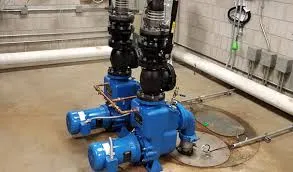Uighur
- Afrikaans
- Albanian
- Amharic
- Arabic
- Armenian
- Azerbaijani
- Basque
- Belarusian
- Bengali
- Bosnian
- Bulgarian
- Catalan
- Cebuano
- Corsican
- Croatian
- Czech
- Danish
- Dutch
- English
- Esperanto
- Estonian
- Finnish
- French
- Frisian
- Galician
- Georgian
- German
- Greek
- Gujarati
- Haitian Creole
- hausa
- hawaiian
- Hebrew
- Hindi
- Miao
- Hungarian
- Icelandic
- igbo
- Indonesian
- irish
- Italian
- Japanese
- Javanese
- Kannada
- kazakh
- Khmer
- Rwandese
- Korean
- Kurdish
- Kyrgyz
- Lao
- Latin
- Latvian
- Lithuanian
- Luxembourgish
- Macedonian
- Malgashi
- Malay
- Malayalam
- Maltese
- Maori
- Marathi
- Mongolian
- Myanmar
- Nepali
- Norwegian
- Norwegian
- Occitan
- Pashto
- Persian
- Polish
- Portuguese
- Punjabi
- Romanian
- Russian
- Samoan
- Scottish Gaelic
- Serbian
- Sesotho
- Shona
- Sindhi
- Sinhala
- Slovak
- Slovenian
- Somali
- Spanish
- Sundanese
- Swahili
- Swedish
- Tagalog
- Tajik
- Tamil
- Tatar
- Telugu
- Thai
- Turkish
- Turkmen
- Ukrainian
- Urdu
- Uighur
- Uzbek
- Vietnamese
- Welsh
- Bantu
- Yiddish
- Yoruba
- Zulu
Telephone: +86 13120555503
Email: frank@cypump.com
ئاۋغۇست . 13, 2024 00:32 Back to list
High-Efficiency Non-Clog Submersible Sewage Pump for Reliable Wastewater Management Solutions
Understanding Submersible Non-Clog Sewage Pumps
Submersible non-clog sewage pumps play a crucial role in managing wastewater in municipal, commercial, and industrial settings. Unlike traditional pumps, submersible pumps are designed to operate while submerged in the fluid they are pumping, making them particularly effective for sewage and wastewater applications. Their unique design not only enhances efficiency but also reduces the need for complex and costly pump stations.
What is a Submersible Non-Clog Sewage Pump?
A submersible non-clog sewage pump is a type of pump that is submerged underwater to transport wastewater, sewage, and other fluids containing solid particles. The term non-clog indicates that these pumps are engineered to handle debris and solids—such as paper, rags, and other waste materials—without becoming clogged. This capability is essential for maintaining efficient operation in sewer systems, where the flow of water can often be interrupted by blockages.
Key Features
1. Design and Construction Submersible pumps are typically constructed from robust materials such as stainless steel or cast iron, ensuring durability and resistance to corrosive environments. The impeller design is critical; non-clog impellers are often vortex or channel-type, allowing solids to pass through without obstruction.
2. Efficiency Being submerged, these pumps operate with reduced risk of cavitation, a phenomenon that can diminish pump performance and longevity. Additionally, their operation in the fluid medium enhances the cooling of the motor, leading to increased efficiency and longer service life.
3. Installation Flexibility Submersible non-clog pumps can be installed in various configurations—on the ground or in a wet well—making them adaptable to different site conditions and requirements. This flexibility offers significant advantages in urban environments where space is often limited.
submersible non-clog sewage pump

4. Low Noise Levels Since submersible pumps operate underwater, noise levels are significantly reduced. This feature is particularly beneficial in residential areas near wastewater treatment facilities or during construction projects.
Applications
Submersible non-clog sewage pumps are primarily used in the following applications
- Municipal Wastewater Treatment These pumps effectively handle the sewage from homes and businesses, ensuring a continuous and reliable flow to treatment plants. - Commercial and Industrial Use Factories and large facilities generate significant amounts of wastewater, which can contain solid waste. Submersible pumps are critical in managing this waste efficiently. - Construction Sites During construction activities, groundwater or water accumulation often occurs. Submersible pumps are utilized to remove excess water, preventing flooding and ensuring safety on-site. - Emergency Situations In instances of flooding or sewer backup, having a reliable submersible pump can mitigate damage and facilitate quick drainage.
Maintenance Considerations
While submersible non-clog sewage pumps are designed for reliability, regular maintenance is essential to prolong their lifespan. This includes checking for wear and tear, ensuring proper lubrication, and inspecting electrical components. Additionally, operators should monitor performance to detect any changes that could indicate wear or blockage.
Conclusion
Submersible non-clog sewage pumps are an indispensable part of modern wastewater management. Their ability to handle solids, operate efficiently even in challenging conditions, and adapt to various installations makes them a superior choice for managing sewage and wastewater. Investing in high-quality submersible pumps can lead to significant long-term benefits, including reduced maintenance costs, improved efficiency, and enhanced environmental protection. As urban populations grow and infrastructure needs evolve, the role of these pumps will continue to expand, ensuring safe and efficient wastewater management for communities around the globe.
-
Horizontal Split Case Pump with GPT-4 Turbo | High Efficiency
NewsAug.01,2025
-
ISG Series Pipeline Pump - Chi Yuan Pumps | High Efficiency, Durable Design
NewsAug.01,2025
-
Advanced Flue Gas Desulfurization Pump with GPT-4 Turbo | Durable & Efficient
NewsJul.31,2025
-
ISG Series Vertical Pipeline Pump - Chi Yuan Pumps | Advanced Hydraulic Design&Durable Construction
NewsJul.31,2025
-
ISG Series Vertical Pipeline Pump - Chi Yuan Pumps | Energy Efficient & Low Noise
NewsJul.31,2025
-
pipeline pump - Chi Yuan Pumps Co., LTD.|High Efficiency&Low Noise
NewsJul.31,2025










